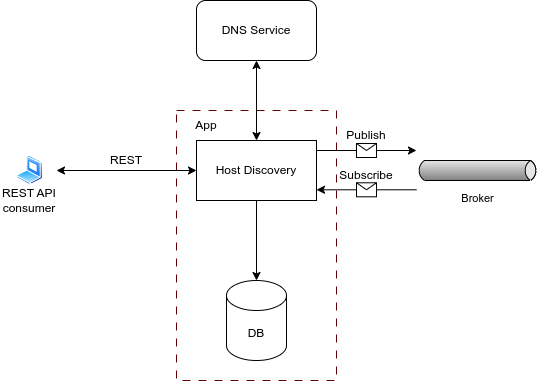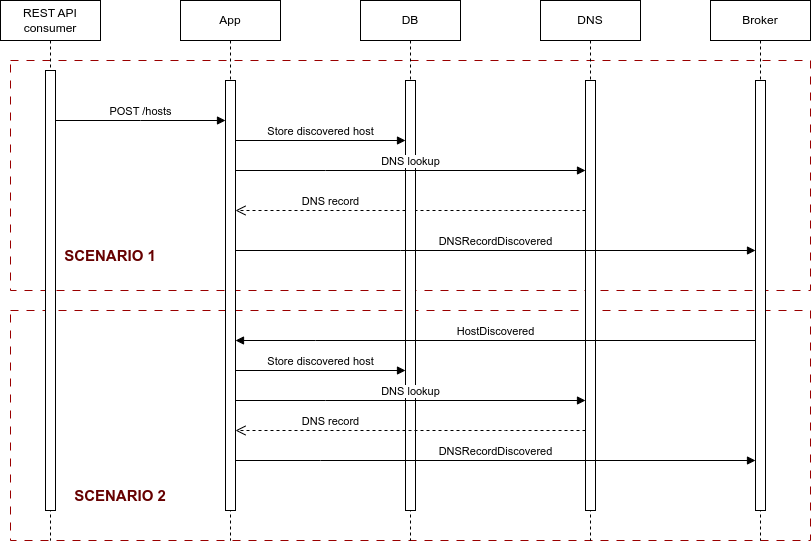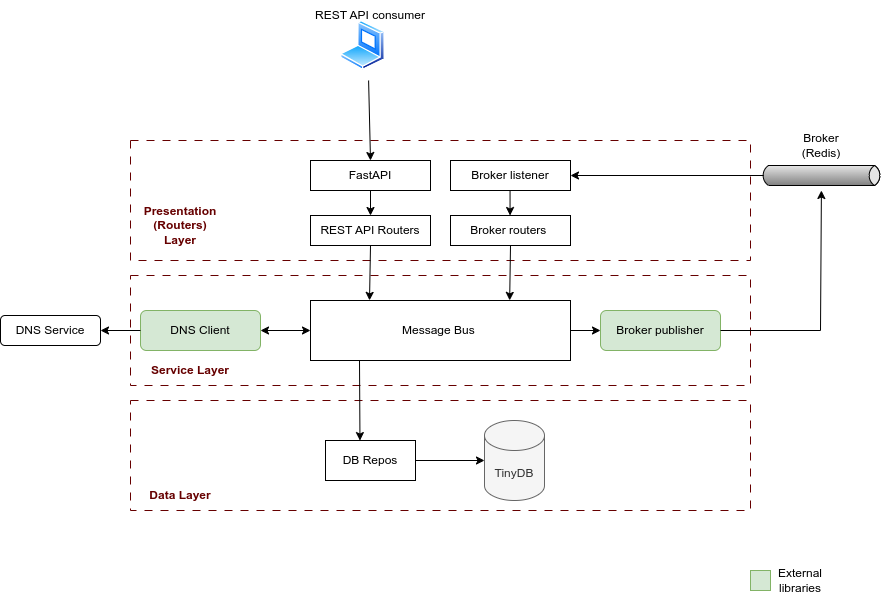The following document describes the architecture and the implementation of an active host discovery application. Briefly, the application receives information about newly discovered hosts, stores them in DB, looks them up in a DNS service and if they are found active publishes them to a broker.
The application is supposed to interact with 3 external components:
- A DNS service where it gets information about whether a given host is active
- A broker to whom is attached listening to incoming events regarding newly discovered hosts. As soon as an active DNS record is discovered the relevant data is published to the broker.
- A DB where are saved the newly discovered hosts.
The following diagram depicts the system architecture involving the app as well as the external components:
The application enables access via two channels:
- A REST API
- Listening for broker messages via predefined subscriptions
The following diagram depicts one scenario per case:
The application is implemented in a three-layer architecture:
The REST API is served via FastAPI and the app can subscribe and listen to topics of a Redis broker. As soon as a message arrives via either channel a service event will be raised and handled in the service layer.
The main component here is a message bus which handles the events coming from the presentation layer. Additionally, It utilizes two external (custom built) libraries for accessing the DNS service and the broker for data publishing.
The database (TinyDB) is accessed via dedicated repositories.
The application layout is quite modular and low level access is abstracted away thus enabling easy addition of new features. Here are some general guidelines:
- New REST API router
- add a new controller in
host_discovery.routers.http.hosts
- add a new controller in
- New broker subscription
- add a new controller in
host_discovery.routers.broker.hosts
- add a new controller in
- New business logic
- Add a new service event and relevant handler(s) in
host_discovery.service.handlersand make sure to call themessage_busfrom the corresponding controller.
- Add a new service event and relevant handler(s) in
- Publish new event
- Add a new function in
host_discovery.pubsub.publisherand call it from the appropriate service handler.
- Add a new function in
- New DB access, i.e. host retrieval, update, delete
- Add new methods in the
HostRepoofhost_discovery.repos.hosts
- Add new methods in the
If we want to crawl the HTML content of an active host and we want the crawling to
take place among the current sequence of actions we need to modify the
host_discovery.service.handlers by adding another service event handler and include
it with the rest handlers of the respective event.
- The libraries in
libpackage should ideally live in separate repositories and be installed viarequirements.txt - The DNS service lookup is not supposed to return an immediate response since its result is published in the broker. Thus, it can be handled as a background process, e.g. run with Celery.


